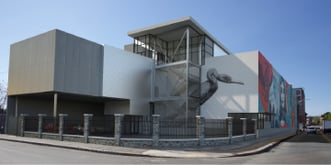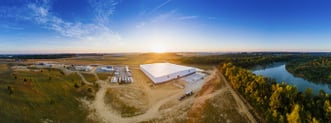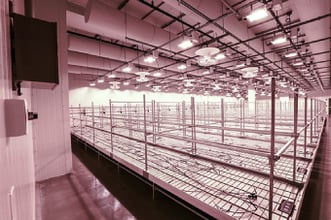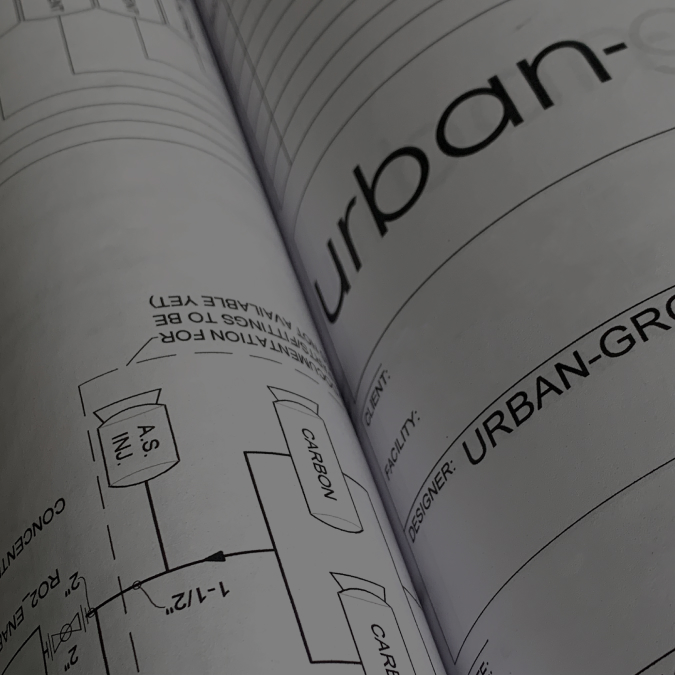Lettuce has helped feed humanity for a long time, appearing in Egyptian art over 5,000 years ago. Today, lettuce production is a significant part of the expanding vertical farming market.
More consumers want organic vegetables, and current dietary and nutritional trends drive the demand for lettuce. Chefs and restaurants also covet fresh, nutrient-dense greens to meet customer expectations.
Leafy varieties typically mature in a month or less. Some growers cultivate lettuce in soil. Others look to hydroponic, aquaponic, or aeroponic growing systems. More growers are looking to economies of scale to improve margins. Individual operations are now delivering more than a million pounds of produce annually.
Choose Indoor Farming for Growing Lettuce Commercially
Indoor farming is thriving partly due to lower costs- LEDs are energy-efficient, automated nutrient delivery systems reduce labor costs, and robotics increasingly assist with planting, watering, pruning, and harvesting.
One indoor farming estimate suggests a compound annual growth rate (CAGR) of 14.3% for the period 2020 to 2026. This means that a $5.5 billion market in 2020 would be $19.86 billion by 2026.
Indoor commercial farming also eliminates the threat of adverse weather. There are no flooding rains, hail storms, or extended droughts to contend with.
The Optimal Growing Environment for Lettuce
Lettuce is highly perishable after harvesting. Growers must move their products to market without delay.
Growers often favor varieties like butterhead, romaine, and looseleaf. Butterhead lettuce features loose heads with tender hearts. Looseleaf varieties don’t form heads at all. Romaine lettuce has long oval leaves supported by crispy central ribs. Indoor growers also choose other leafy greens like spinach, kale, bok choy, and Swiss chard.
Climate and Cultivation Variables
Lettuce responds well to cool growing conditions in the 60 to 65°F range, so you must avoid prolonged exposure to higher temperatures. At sustained temperatures above 75°F, the plants begin to flower and produce seeds. Growers must combine the right temperature, humidity, and water to avoid wilting.
Adequate airflow reduces threats posed by indoor pests like aphids and spider mites. However, excess airflow may dry the plants out. Automated nutrient delivery is ideal. Recommended pH levels range from 5.5 to 6.5.
Outdoors, lettuce is a cool-weather crop with a modest need for sunlight. Indoors, precisely positioned, energy-efficient lighting enhances results. In one study, University of Florida researchers compared LED and fluorescent lighting. They noted that LEDs produced more “shoot fresh and dry mass.” However, LED and fluorescent lamps still delivered “comparable growth and quality attributes.” Full-spectrum LED lighting is a popular, cost-effective choice. From 2008 to 2015, the price of LED lights dropped by as much as 94%.
Fertile, well-drained loam is ideal for soil growers as it is compatible with the plant’s shallow root system. Nutrient delivery is key in both soil and soil-less environments. Successful fertilization requires an understanding of macronutrients, secondary nutrients, and micronutrients. Nitrogen is a macronutrient promoting the desired leafy growth. Sufficient calcium levels decrease tip burn.
Selecting the Best Commercial Facility for Growing Lettuce
To start, a prospective grower must either build a facility from the ground up or repurpose an existing one. If it is the latter, an initial feasibility study includes an evaluation of a property’s condition. What is the cost to bring it up to code? What is the state of the roof and major systems?
Essential location requirements include:
- Farm-friendly zoning
- Efficient transportation
- Future scalability
- Cost-effective water and energy resources
Repurposing an existing warehouse or factory is one approach. However, it is vital to ask the right questions.:
- To what degree does a facility allow for high-capacity vertical farming?
- Are existing rooms readily converted to usable space?
- Are existing structural walls an obstacle to a retrofit?
- Is the use of renewable energy sources like onsite solar an option?
- How secure is the building envelope?
- Is the building adequately insulated?
Designing the Perfect Grow Space for Lettuce
A concept for an ideal growing space begins with a well-conceived vision and clear goals. A grower must develop a plan for creating and maintaining an ideal growing environment. It is also important to project expected yields, revenue, and expenses, including labor, lease or mortgage payments, utilities, maintenance, and repairs.
An architect-led design-build firm can help you realize your goals. Look for a turnkey contractor dedicated to stakeholder collaboration throughout the process. Careful timing and seamless coordination speed up the facility’s ability to get up and running sooner.
Indoor Lettuce Farming with urban-gro
Lettuce is one of the most popular indoor-farming vegetables.
As a crop, lettuce is at once delicate and prolific. It thrives in a stable, well-regulated environment. When lettuce growers lean on the knowledge of third-party experts, they benefit from past lessons.
urban-gro is an integrated professional service and design-build firm serving the Controlled Environment Agriculture (CEA) sector. Learn more about lettuce and indoor commercial growing. Contact the urban-gro team today!





